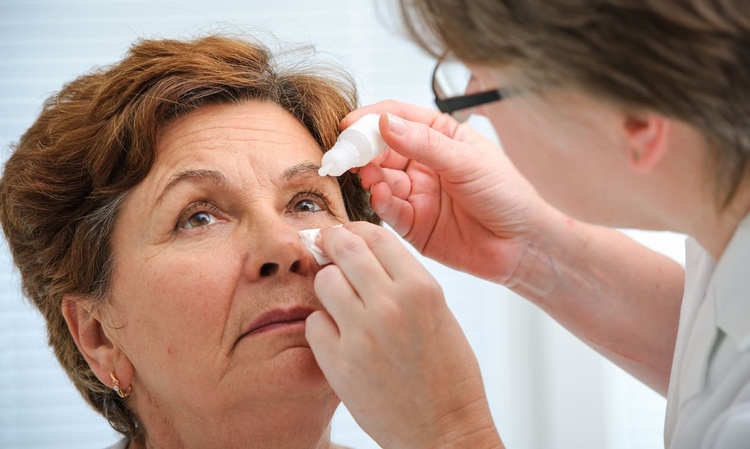Eye Drops After Cataract Surgery: What Most People Don’t Realize
Cataract surgery ranks among the most frequently performed surgical procedures worldwide, with millions of people regaining clear vision each year. However, many patients underestimate the critical importance of post-surgical eye drop regimens in their recovery process. These medications serve as the foundation for proper healing, infection prevention, and optimal visual outcomes, yet misconceptions about their use remain surprisingly common among patients and caregivers alike.

The Role Of Eye Drops In Post-Surgery Recovery
Eye drops following cataract surgery serve multiple essential functions that extend far beyond simple comfort measures. These medications work systematically to reduce inflammation, prevent bacterial infections, and promote proper tissue healing around the newly implanted intraocular lens. The surgical process creates microscopic trauma to delicate eye tissues, triggering natural inflammatory responses that, while part of normal healing, require careful management to prevent complications.
Antibiotic drops typically prescribed for the first week help eliminate any bacteria that might have entered during surgery, while anti-inflammatory medications control swelling and reduce the risk of complications like cystoid macular edema. Some patients also receive pupil-dilating drops to maintain comfort and prevent certain types of inflammation. The coordinated action of these different medication types creates an optimal environment for healing that significantly improves surgical outcomes.
Common Misconceptions About Eye Drops After Cataract Surgery
One prevalent misconception suggests that missing a few doses of prescribed eye drops won’t significantly impact recovery. In reality, maintaining consistent medication levels in eye tissues proves crucial for preventing complications that could affect long-term vision quality. Another common belief holds that expensive brand-name drops work better than generic alternatives, though studies consistently show equivalent effectiveness when active ingredients match.
Many patients incorrectly assume they can stop using drops once their vision feels clear, not realizing that healing continues for several weeks beyond initial visual improvement. Some individuals also believe that using drops more frequently than prescribed will accelerate healing, when excessive use can actually irritate tissues and potentially slow recovery. Understanding these misconceptions helps patients make informed decisions about their post-surgical care.
Potential Side Effects Of Eye Drops Following Cataract Surgery
While generally well-tolerated, eye drops can produce various side effects that patients should recognize as normal or concerning. Mild stinging or burning upon instillation occurs commonly and typically subsides within minutes. Temporary blurred vision immediately after drop application represents a normal response, particularly with thicker ointment formulations used at bedtime.
More concerning symptoms requiring medical attention include persistent redness that worsens over time, increasing pain rather than gradual improvement, or sudden vision changes beyond expected post-surgical fluctuations. Some patients experience allergic reactions to preservatives in certain drop formulations, manifesting as excessive tearing, itching, or swelling around the eye area. Recognizing the difference between normal healing responses and potential complications enables patients to seek appropriate care when necessary.
Expert Recommendations For Using Eye Drops Effectively
Healthcare professionals emphasize proper technique as essential for maximizing drop effectiveness while minimizing waste and contamination risks. The recommended approach involves washing hands thoroughly, tilting the head back slightly, pulling down the lower eyelid to create a small pocket, and instilling drops without touching the dropper tip to the eye or surrounding skin.
Timing between different types of drops matters significantly, with experts recommending at least five-minute intervals when multiple medications are prescribed. This spacing prevents dilution effects and ensures each medication maintains adequate contact time with eye tissues. Proper storage according to manufacturer instructions, typically at room temperature away from direct sunlight, helps maintain medication potency throughout the prescribed treatment period.
Understanding The Importance Of Adhering To Eye Drop Schedules
Consistent adherence to prescribed eye drop schedules directly correlates with superior surgical outcomes and reduced complication rates. The medications work most effectively when maintained at steady therapeutic levels in eye tissues, which requires regular dosing as directed by surgical teams. Missing doses or stopping treatment early can lead to increased inflammation, delayed healing, or increased infection risk.
Research demonstrates that patients who follow their prescribed regimens closely experience fewer post-operative complications and achieve better final visual acuity compared to those with poor adherence. Setting phone alarms, using pill reminder apps, or enlisting family members to help with scheduling can significantly improve compliance rates. The temporary inconvenience of regular drop instillation provides long-term benefits that last throughout the improved vision period following successful cataract surgery.
Following cataract surgery, the proper use of prescribed eye drops represents a critical component of successful recovery that deserves careful attention and consistent execution. Understanding their multiple roles in healing, recognizing common misconceptions, being aware of potential side effects, following expert application techniques, and maintaining strict adherence to prescribed schedules all contribute to optimal surgical outcomes. While the post-operative period requires dedication to medication regimens, this commitment directly translates to clearer vision and reduced complications that enhance quality of life for years to come.
This article is for informational purposes only and should not be considered medical advice. Please consult a qualified healthcare professional for personalized guidance and treatment.




